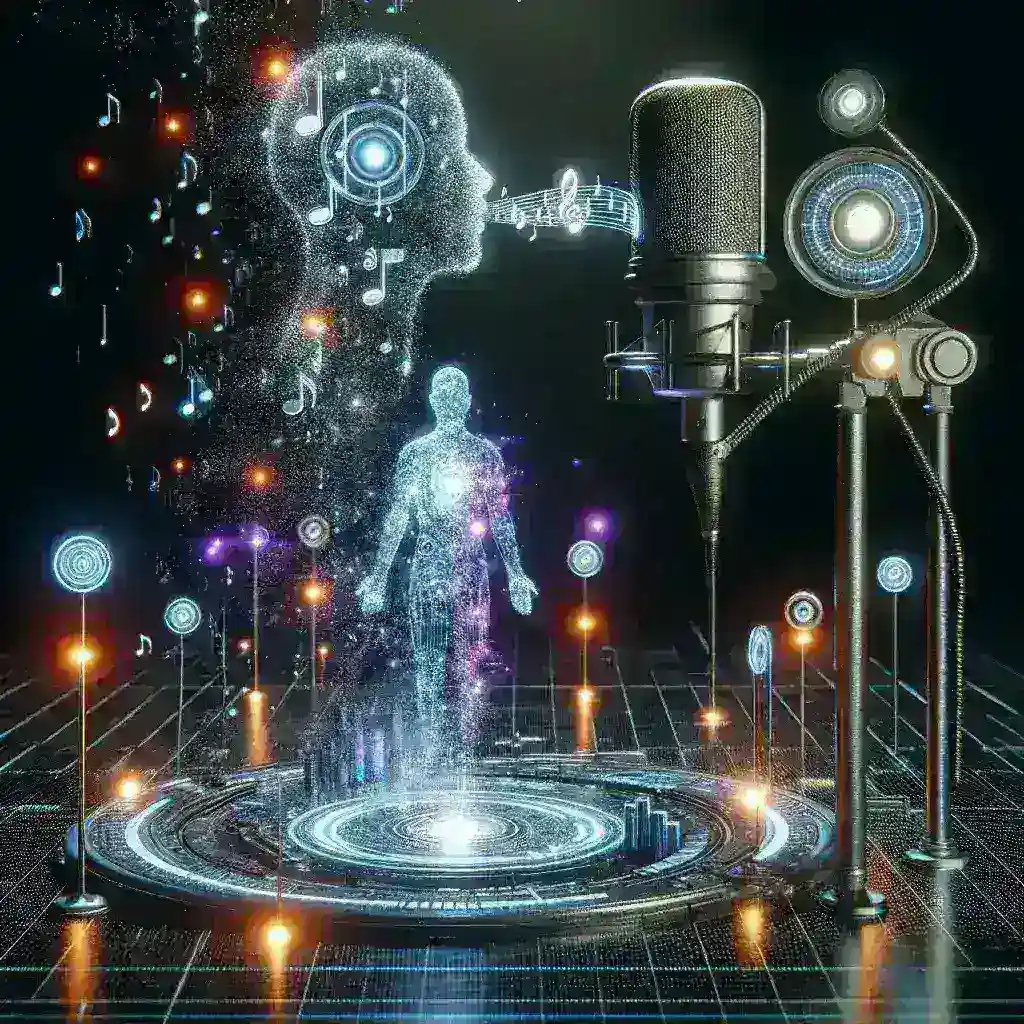Introduction to Voice Cloning Technology
Voice cloning technology has emerged as a groundbreaking innovation in the fields of music and entertainment. The ability to replicate the voice of an artist, even after their passing, raises intriguing questions about artistry, ethics, and the future of creative expression. This article delves into how voice cloning technology enables authorized synthetic performances of deceased artists, exploring its history, implications, and future potential.
A Brief History of Voice Cloning
The concept of voice cloning is not entirely new; it has its roots in early speech synthesis research of the 20th century. However, significant advancements have been made over the past decade, primarily driven by improvements in artificial intelligence (AI) and machine learning. These technologies have enabled the creation of highly accurate voice models that can mimic the unique characteristics of an individual’s voice.
Early Developments
Initial attempts at voice synthesis were rudimentary, often resulting in robotic-sounding speech. However, as computing power increased and machine learning algorithms evolved, researchers began to develop more sophisticated models. By analyzing vocal recordings, these algorithms learned the nuances of pitch, tone, and rhythm, allowing them to recreate voices with remarkable fidelity.
The Birth of Synthetic Performances
With the introduction of deep learning techniques, the accuracy of voice cloning reached new heights. Projects such as Vall-E and Descript’s Overdub allowed users to create synthetic speech that was nearly indistinguishable from real human voices. This paved the way for the first authorized synthetic performances of deceased artists, a trend that has captured the attention of the music industry and fans alike.
Examples of Voice Cloning in Use
Several artists and estates have embraced voice cloning technology to create new works and preserve legacies. One notable example is the late rapper Tupac Shakur, whose voice was used in a holographic performance at Coachella in 2012. This performance demonstrated the potential of combining voice cloning with holographic technology to bring deceased artists back to the stage.
Resurrecting Legends
In more recent endeavors, the estates of Freddie Mercury and Michael Jackson have explored the use of voice cloning to create new music. By utilizing advanced AI algorithms, these estates can produce new songs that sound remarkably like the original artists, allowing fans to experience their music in new and innovative ways.
The Ethical Considerations
While voice cloning technology presents exciting possibilities, it also raises complex ethical questions. The idea of creating synthetic performances of deceased artists can be viewed from multiple perspectives.
Consent and Authorization
One of the primary concerns revolves around consent. Who owns the rights to an artist’s voice after their death? The estates and heirs of deceased artists often hold these rights, but the question of whether they should be allowed to create new performances is contentious. Proponents argue that as long as the estate gives authorization, it can serve as a tribute to the artist’s legacy. Critics, however, worry that this practice could exploit the artist’s memory for commercial gain.
Preservation vs. Exploitation
Another aspect of the debate is the fine line between preserving an artist’s legacy and exploiting it. While some believe that creating new works using voice cloning technology keeps the memory of the artist alive, others fear that it diminishes the authenticity of their original work and could lead to a dilution of their artistic integrity.
The Future of Voice Cloning Technology
As technology continues to evolve, the potential for voice cloning will only expand. Experts predict that the future could see even more lifelike renditions of not just deceased artists, but also living artists wishing to explore new creative avenues.
Emerging Trends
One emerging trend is the possibility of interactive performances. Imagine attending a concert where you could request songs from a virtual version of a deceased artist, or even having them sing alongside a living performer. This could open up new avenues for collaboration and creativity.
AI and Personalization
Additionally, advancements in AI could lead to highly personalized experiences where voice cloning technology adapts to individual preferences, creating custom performances tailored to the listener’s tastes. This level of personalization would revolutionize the way music is consumed and experienced.
Conclusion
Voice cloning technology represents a unique intersection of innovation, creativity, and ethics in the music industry. As we navigate the complexities of authorized synthetic performances of deceased artists, it is crucial to strike a balance between honoring legacies and respecting the artistic integrity of original works. The conversations surrounding this technology will undoubtedly shape its future and the way we remember and celebrate the music that has defined generations.
Final Thoughts
In conclusion, while voice cloning offers exciting possibilities for recreating the sounds of the past, it also demands careful consideration of the ethical implications involved. The blending of technology and artistry will continue to evolve, and the music industry must adapt to embrace these changes while preserving the essence of what makes music so profoundly human.
Call to Action
As voice cloning technology continues to develop, we invite readers to explore their thoughts on the ethical implications and potential of synthetic performances. What are your views on resurrecting the voices of deceased artists? Join the conversation and share your perspective on this fascinating topic.

Leave a Reply